Ciudad Acuña, Coahuila 作者: 来源: 发布时间:2021-11-18
1.Population and Area
Pop: 216,099 (metro)
Area: 11,487.70 km2 (munip.)
Elev: 271 masl
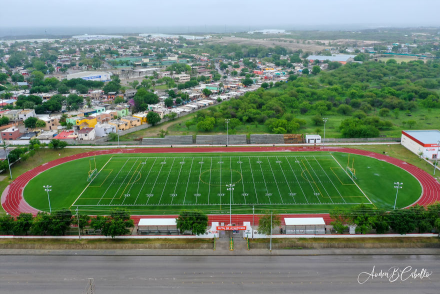
2. Natural geography
Nature and weather
Flora and fauna
The vegetation of the municipality of Acuña is made up of grasslands, shrubs and pine forests. The fauna is made up of animals such as white-tailed deer, mule deer, bear, turkey, puma and coyote.
Climate
The climate of Ciudad Acuña is one of the most extreme in the country, similar to that of the great plains of the southern United States. It is of the dry Subtropical type, with short and cold winters, very hot summer and mild spring-autumn. In late spring and early summer, extreme phenomena such as tornadoes of strong intensity caused by the last cold fronts of the season can occur. Frosts are common every winter and there are many cold days (Maximum temperature below 10ºC) in this season.
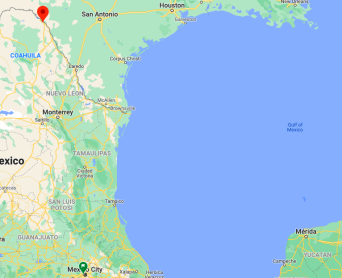
Getting there and around
Get there
By plane – The quickest way to get from Mexico City to Ciudad Acuña is to fly which costs $5500 - $15000. There is no direct flight from Mexico City Airport to Del Rio Airport. The quickest flight takes 5h 49m and has one stopover.
By car – The distance between Mexico City and Ciudad Acuña is 1116 km. The road distance is 1311.5 km. It takes approximately 15h 35m to drive from Mexico City to Ciudad Acuña.
By bus – The cheapest way to get from Mexico City to Ciudad Acuña is to bus which costs $2200 - $2800 and takes 22h 1m.
https://www.rome2rio.com/s/Mexico-City/Ciudad-Acu%C3%B1a
Rideshare – Check out Blabla Car's carpooling service for rideshare options between Mexico City and the city you are visiting. A great option if you don't have a driver's license or want to avoid public transport.
Car Rental – To explore Mexico’s provincial towns and cities—including its beach locations and the scenery and attractions near them— consider renting a car for your visit. Having your own car will give you more flexibility than using public transport options and, in some cases, offer you access to places which are otherwise difficult to visit without the use of a car.
COVID19 – International entry into Mexico from United States
Allowed for: All visitors arriving by air. Mexico land borders are closed to non-essential travel
Restricted for: There are no current restrictions.
Get around
Local Buses – Local buses and mini-buses (combis or micros) are available locally for a fraction of the cost of a taxi around town. You need to speak Spanish to be able to ask for directions or ask the driver to tell you where to get off.
Taxis – Taxis in most of Mexico’s towns and cities are not metered, so agree your price before you get in. Taxi travel is very affordable in Mexico, in comparison to the USA, Canada and Europe, and so provides a viable means of public transportation in Mexico. Your hotel can arrange taxis for you; some post their rates on a board in the lobby; taxi hotel rates are usually higher than cabs you hail off the street. If you speak Spanish, you will have a distinct advantage and be able to negotiate a price with the driver.
Uber is expanding rapidly across Mexico and now offers services in cities across the country, including: Mexico City, Toluca, Cuernavaca, Puebla, Querétaro, León, Aguascalientes, San Luis Potosí, Guadalajara, Monterrey, Hermosillo, Tijuana, Mexicali, and Mérida. Uber has been adding Mexican cities to its network every year, check for availability when you arrive at your destination in Mexico.
Cabify and Didi are also developing and currently operate in cities including Mexico City, Toluca, Monterrey, Puebla, Querétaro and Tijuana. Check for availability in the city you are visiting.
These services offer people with smartphones a way to book a cab through a mobile app for a pre-agreed price. Fares are comparable with Sitio type cabs, and sometimes trade at a premium to this when local demand increases.
https://www.mexperience.com/transport/taxi-travel-in-mexico/#51
3. ECONOMY
GDP: 17,686 M MXN (2010)
https://imco.org.mx/ciudades2010/ciudades/60_Ciudadacuna.html
4. Industry characteristics
Farming
The crops that predominate in the municipality are: wheat, oats, tares, corn, forage sorghum, grain sorghum, beans, watermelon, squash, improved walnut, Creole walnut and alfalfa.
Cattle raising
This municipality has an exploitation of cattle of different species such as: Cattle, pigs, sheep, goats and horses. Includes bovine for milk, meat and work. 30% of the economically active population is dedicated to this activity.
Other livestock products that are exploited in the municipality are: milk, hides and wool.
Industry
It has 5 industrial parks, where 62 foreign companies are installed, highlighting the maquiladora industry, dedicated to the assembly of electrical, clothing and decorative appliances. There are companies dedicated to the production of furniture, doors, industrial equipment and food, among others.
Most of the production is destined for the United States. 30% of the economically active population is dedicated to this activity.
Forest Exploitation
In the rural areas of the municipality, different products are collected, such as resin, barbásco and candelilla.
Important fluorite deposits are located in the municipality, their annual production was 39,101 tons in 1995.
Pisciculture
The La Amistad dam is located in the municipality of Acuña, and is considered the largest body of water in the state, from which a large part of the entity's fishing production is obtained, exploiting the following species: carp, bream, catfish, tilapia, matalote and catano. Around 11 tons are exploited per year, which are sold locally, in Piedras Negras and in the Carboniferous region.
Tourism
Ciudad Acuña mainly receives border tourists, for whom it has places of attraction and accommodation: such as handicraft shops, hotels, typical restaurants and international cuisine. 10% of the economically active population is dedicated to this activity.
Commerce
This activity revolves around the sale of food, beverages and tobacco products; clothing and articles for personal use; of household items; self-service and department stores specialized by merchandise lines; of gases, fuels and lubricants; raw materials, materials and auxiliaries; of transport equipment, spare parts and accessories; of real estate and miscellaneous items. 10% of the economically active population is dedicated to this activity.
Services
The municipality has a wide variety of services, including professionals and technicians, rental, teaching, scientific research and cultural dissemination; temporary accommodation; preparing and selling food and beverages; recreational and leisure, personal, home and miscellaneous; social work doctors and veterinarians; of mercantile, professional, civic, political, labor and religious groups.
Economically Active Population by Sector
The economically active population of the municipality of Acuña is distributed in the following sectors:
Primary Sector 40%
Secondary Sector 40%
Tertiary Sector 20%
Key project: Amistad II Wind Farm in Ciudad Acuña
With an investment of approximately 115 million dollars, Enel Green Power México began construction of the Amistad II wind farm, with an installed capacity of 100 MW, in September 2018.
The subsidiary of the Italian Enel reported at that time that the complex would start operations in the first half of 2020 and that it would generate around 350 GWh per year, thereby avoiding the emission of around 190 thousand tons of CO2 into the atmosphere.
He added that the construction of Amistad II was based on Enel's Sustainable Construction Site model, which incorporates the rational use of resources, such as water-saving systems and recycling processes.
Located in Ciudad Acuña and developed by Enel Green Power México, the Parque Amistad II wind complex is one of the 23 renewable energy generators benefiting from the provisional suspension of the agreement issued by the National Center for Energy Control (Cenace), which prevented testing preoperative.
The Agreement to Guarantee the Efficiency, Quality, Reliability, Continuity and Safety of the National Electric System issued by Cenace on April 29 generated great controversy and criticism from companies and even governments such as Canada, Europe and others, for the attack implicit against investments in solar and wind energy and the protection of the monopoly that the Federal Electricity Commission would represent.
The Enel Group indicated that the Amistad II park would be backed by a contract that provides for the sale to the Clearing House of the National Energy Control Center of specific volumes of energy for a period of 15 years and of the Clean Energy Certificates (CEL) corresponding to a period of 20 years.
The company was also awarded in the November 2017 auction the 100 MW Amistad III and 149 MW Amistad IV plants, which will also be built in Ciudad Acuña.
https://www.zocalo.com.mx/new_site/articulo/si-hara-pruebas-parque-amistad-ii-de-ciudad-acuna
5. Attractions
Novillos National Park
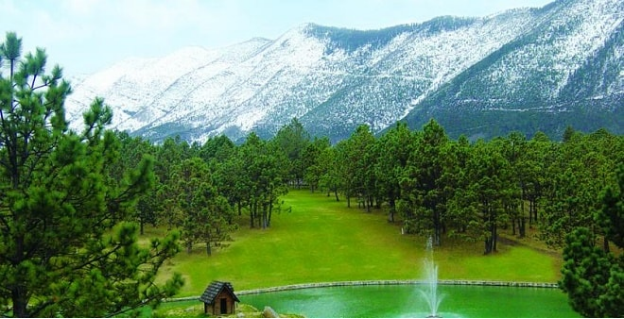
One of the nicest things about Acuna is its scenery, especially relative to other towns along the border. At Parque Nacional de los Novillos – found near the Sierra Madre Oriental – you will see the towering Mexico Plateau and hundreds of native trees and flowers. As many of the park's ponds and creeks have mostly dried up, you can spot many cactus varieties. However, on hot days, people still enjoy taking a dip in the remaining bodies of water there; other common activities include hiking and picnicking.
Since 1940 and thanks to a binational effort between Mexico and the United States, this place was declared a National Park. With a large area of walnut and oak forests, it is an oasis in the middle of a semi-desert area. Within its limits is the Las Vacas stream, formed by a small spring that feeds other lagoons. It is a good place to spend a pleasant picnic.
https://www.visitmexico.com/en/coahuila-de-zaragoza/guerrero/san-bernardo-mission
Dam of Friendship

Of the various issues discussed by Presidents Adolfo López Mateos and Dwight Eisenhower, the one that mattered for Ciudad Acuña was the announcement of the construction of a dam, which at the beginning would be called the Diablo Dam in reference to the Rio del Diablo, a tributary of the Rio Grande. , gruff and threatening. But the name that the dam would have, so dark, did not please any of the leaders. Instead they proposed the current one: Dam of Friendship. It was built throughout the sixties of the last century, saw two Mexican and three American presidents pass by, in 1969 it was inaugurated by Gustavo Díaz Ordaz and Richard Nixon. A sign of goodwill between the two governments, in the middle of the dam bridge you can find a monument with the two eagles: the American and the Mexican. The dam is an engineering marvel, it is 77 meters high above water level and 665 meters long. It creates a lake with a surface area of 30 thousand hectares and is capable of storing millions of cubic meters channeled by the Rio Grande. This dam has been considered one of the most important bodies of water in the world for fishing for bass and snook, although there are also species such as pintontle, robaleta, mojarra and catfish.
https://www.turimexico.com/estados-de-la-republica-mexicana/coahuila-mexico/ciudades-de-coahuila/ciudad-acuna-coahuila
The Corona Club
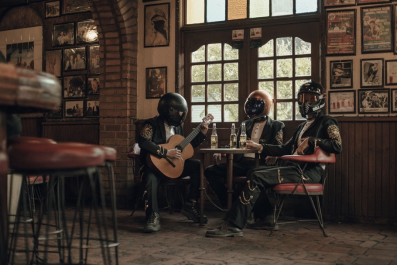
Rodriguez featured Ciudad Acuna's Corona Club – a popular nightclub and dancehall – in "El Mariachi" as well as his 1995 film starring Antonio Banderas, "Desperado." The brightly decorated club has a fully stocked bar with top-shelf tequilas and a wide selection of foreign and domestic beers. The Corona Club often features concerts at its 1,500-capacity venue; you'll hear rock, mariachi, blues and country bands perform here.
Try their generous tacos and tender laing to get an idea of what this bar is like. Slowly savor the extraordinary beer served here. Its exquisite staff reflects the style and character of Corona Club.
This place is still a cool place to hang out for some day drinking and some dancing later in the evening. It's very spacious and doesn't get crowded.
It's located about a block from the international bridge and is on the main street (Miguel Hidalgo St.) on the right-hand side as you stumble in. You can't miss it.
https://es.restaurantguru.com/Corona-Club-Ciudad-Acuna
https://traveltips.usatoday.com/things-ciudad-acuna-mexico-63723.html
Hidalgo Street
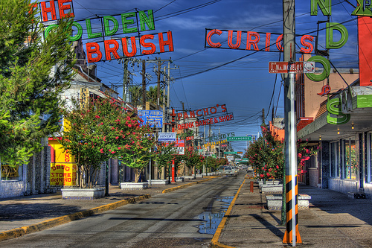
Ciudad Acuña has its American counterpart. Del Río, a small city of just over 35,000 inhabitants, which most outstanding feature is a training base for the United States Air Force, that provides it with a youthful population, eager to party on the weekends.
Americans go down to Ciudad Acuña to purchase medical services, especially dental services, and to visit Hidalgo Street, where the party breaks out in bars and canteens on weekends.
https://www.turimexico.com/estados-de-la-republica-mexicana/coahuila-mexico/ciudades-de-coahuila/ciudad-acuna-coahuila
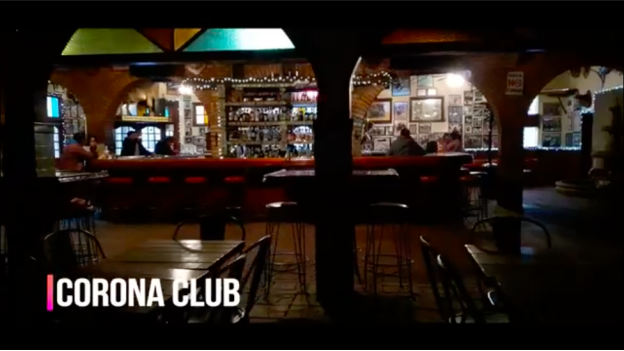
PIEDRAS NEGRAS, COAHUILA MEXICO - TURISMO 2015 (TOURISM)
https://youtu.be/S5bq06u4u5w
6. History
The first recorded settlement of Acuña took place on 27 December 1877. It was founded by a group of colonists led by Domingo Urias, Irineo Casillas Arevalo, and his wife Maximina Espinoza. At the same time, the governor of the state was general Hipólito Charles, who posted a military garrison in the area led by Captain Manuel Leal. In 1880, the community received villa (town) status under its first name of Garza Galán. In 1884, the locality was renamed Congregación las Vacas. Congregacion las Vacas was then renamed Villa Acuña in 1912 after Saltillan poet Manuel Acuña. Villa Acuña was finally given the title of city on 16 September 1951 by Don Jesus, when it got its present name of Ciudad Acuña.
On 24 October 1960, US President Dwight D. Eisenhower and Mexican President Adolfo López Mateos met in Acuña to sign the initial agreements allowing construction of the dam. Construction plans were not finalized until December 1966, when Presidents Lyndon B. Johnson and Gustavo Díaz Ordaz met on the international bridge. Presidents Richard M. Nixon and Gustavo Díaz Ordaz met for the dedication of Amistad Dam on 8 September 1969.
Two little-known revolutionary events took place in this city: the first, when in 1908 the Mexican Liberal Party confronted the federal soldiers of Porfirio Díaz, and the second when Primitivo Gutiérrez, following the ideas of the Flores Magón brothers, took over the town and established an unusual regime of anarchic communism in which factories, farms and transportation were expropriated, a romantic experiment that only remained to the memory of the people of Coin.
Originally created to serve airmen at Laughlin AFB just across the border, "Boys' Town" is an entertainment district located in an area south of Ciudad Acuña and contains a few after-hours bars and brothels, but is designated off-limits to U.S. military personnel.
On May 25, 2015, an F3 tornado struck the city, causing incredible damage and killing 14 people and injuring 200 more.
https://www.turimexico.com/estados-de-la-republica-mexicana/coahuila-mexico/ciudades-de-coahuila/ciudad-acuna-coahuila
7. Other Information: Acuña in Cinema and Books
In the film, Rolling Thunder (1977), the villains are known as the Acuña Boys.
Outdoor scenes for the 1992 cult motion picture El Mariachi were shot here, as well as the bar scenes and street confrontation from the sequel, Desperado. Actor/producer Carlos Gallardo was born in Ciudad Acuña.
Also, Desperado and Single Action were filmed in Acuña at the Corona Club (cater-corner to Ma Crosby's) located on the main strip (La Hidalgo).
In Kill Bill: Volume 2 the protagonist goes to see Bill's friend Estaban, who runs Acuña through the strength of his Acuña boys, the fatherless sons of the women he pimps. In another Tarantino movie, Grindhouse, Acuña Boys Mexican Food is featured on a bumper ad, as well as a take-out drink container in the first scenes of Death Proof.
The film Like Water for Chocolate was filmed on Lake Amistad in Acuña.
The film Love and a .45 features a standoff between the film's primary protagonists and antagonist in Acuña after the three have crossed the U.S./Mexico border.
Portions of the film No Country For Old Men are set in Acuña.
Scenes in the Western novel Ride Harder (2017) take place in Acuña and the town is mentioned in the series's first book, The Hardest Ride (2013).
8.Contact Information
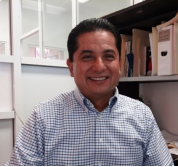
City Mayor: Roberto de Los Santos Vázquez
Phone number: +52 (877) 773 14 58; +52 (877) 773 14 29, ext. 170
Facebook: https://www.facebook.com/Roberto-De-Los-Santos-Vazquez-1160826833951193
Website: https://www.todossomosacuna.com
Govt. Office Address: Libramiento Emilio Mendoza 1690, Aeropuerto, 26230, Cd Acuña, Coahuila
